We have a strict honest review policy, but please note that when you buy through our links, we may receive a commission. This is at no extra cost to you.
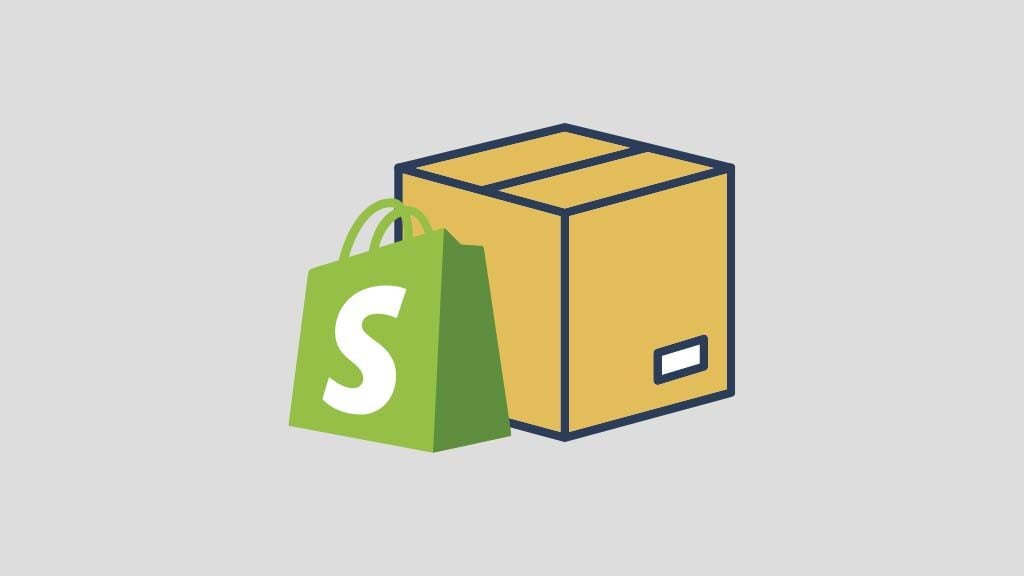
In this simple guide to Shopify dropshipping, I’m going to explain how dropshipping on Shopify works, the best way to get started with it and the key pitfalls to avoid.
Let’s start with a brief overview of what dropshipping is.
Dropshipping: a quick overview
Dropshipping is an ecommerce model where you don’t manufacture, purchase, store or deliver any of products you sell. Instead, you take orders for products via an online store, and pass them onto a supplier. The supplier then charges you, and delivers the products to the customer.
But how does all this work when you’re using Shopify?
How dropshipping on Shopify works
Given that Shopify is fairly synonymous with dropshipping these days, you might be thinking that dropshipping with the platform is simply a matter of creating a Shopify account and listing some products on your store.
It’s not quite that simple, though.
First, Shopify doesn’t actually give you any dropshipping features straight out of the box — in order to dropship with the platform, you’ll need to connect it to third-party tools (more on this shortly).
Second, to dropship effectively with Shopify, you’ll need to give a lot of thought to finding a profitable niche to sell products in, and marketing your store once it’s live.
To start a successful dropshipping business on Shopify, you need to do four key things:
- Set up a Shopify account.
- Identify a niche to operate in.
- Install a dropshipping app and select the products you’d like to sell.
- Market your dropshipping business.
Let’s look at these steps in turn.
1. Get a Shopify account
The first thing you need to do to start dropshipping is get your hands on a Shopify account.
💡 Tip: If you use this special link, you can access a version of the Shopify trial that is extendable to 3 months.
Once you’ve set up your Shopify account, it’s time to think about what you’re going to dropship (and to who!).
This is where finding your niche comes in — so let’s take a look at that.
2. Find a niche
No business becomes a success unless it successfully manages to tap into the right niche — and dropshipping on Shopify is no exception.
If you pick a really saturated niche to sell products in, you’ll find yourself competing with a huge range of established dropshippers selling the same items as you (and possibly cheaper, too).
There are three main ways to identify a good niche to dropship in:
- Via keyword research
- Using Google Trends
- Using data available from online advertising services (for example, Facebook and Google Ads).
Let’s drill down into each of these.
Keyword research
As its name suggests, keyword research helps you understand what people are searching for on the Internet — and how hard it will be to rank highly in search results for the phrases that they’re using to do so.
Keyword research also gives you a great way to identify potentially profitable niches. If you find out that a lot of people are searching for a particular product each month, but that it’s going to be relatively easy to get your store to the top of the search results for that item, then happy days — you’ve just found a niche.
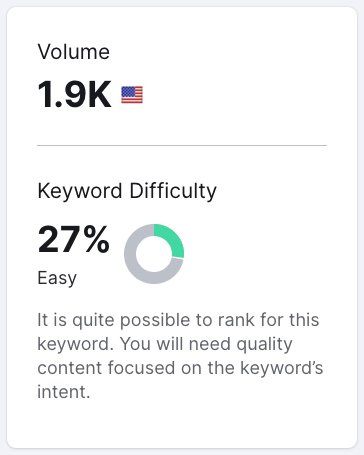
But how do you actually do keyword research?
Well, it involves a three-step process:
- Finding out how many people are searching for a particular phrase each month.
- Establishing how difficult it is going to be to rank in search results for that phrase.
- Getting suggestions for other phrases that it might be easier to rank for.
Once you have this data you can then make a decision as to what keywords — and by extension inventory — are going to work best for your dropshipping business, and optimize your online store’s content for the relevant phrases.
To get the data necessary for keyword research, you’ll need a dedicated SEO tool like Ahrefs or Semrush.
To understand how all this works, take a look at the video below — it walks you through the basic process. You can also read our keyword research guide.
💡 Tip: if you’d like to try Semrush for free, for a limited time you can grab an extended 14-day trial of the platform here (the standard trial lasts just 7 days).
Google Trends
Another way of identifying potentially lucrative dropshipping niches involves using the free Google Trends service.
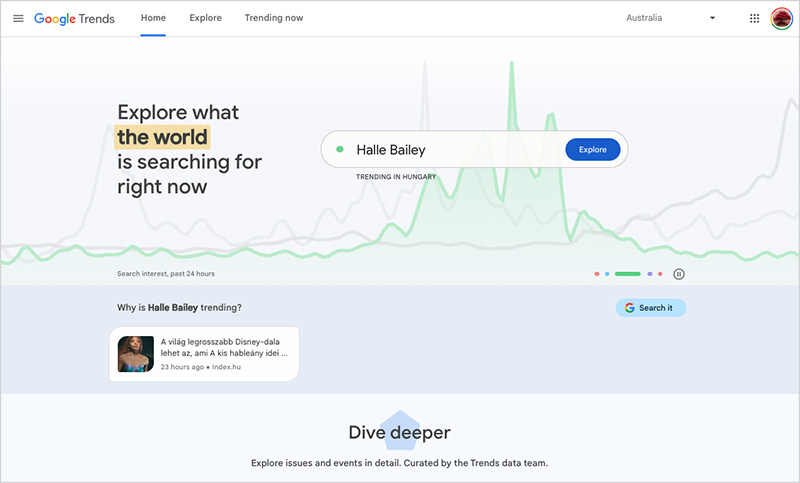
Google Trends analyzes the popularity of top search queries in Google Search across various regions and languages, and then displays charts showing the search volumes for these queries over time.
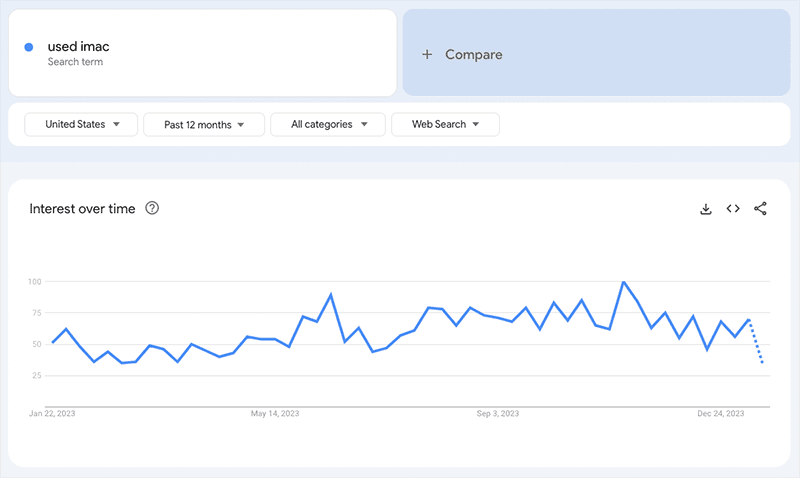
There are two main ways to use Google Trends to identify niches: first, you can enter phrases into the tool and see how popular they are (and how popular they’ve been over time).
A ‘related topics’ list underneath the main Google Trends graph helps you identify phrases and products that you might not have considered concentrating on initially.
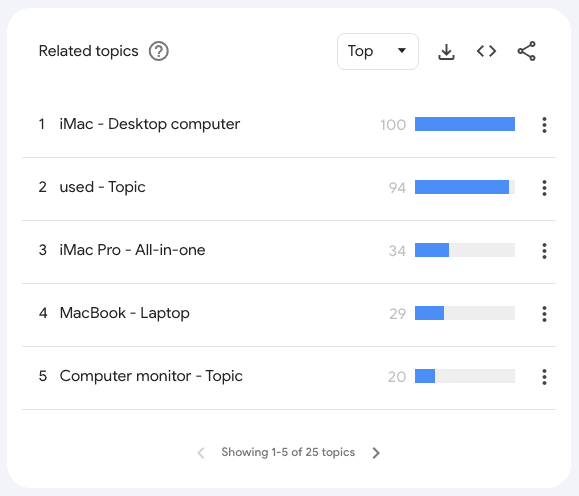
The key thing to watch out for when using Google Trends is not to be sucked into starting a dropshipping business on the basis of a product search that’s trending right now, but might not realistically do so in future.
Think about the fidget spinner craze back in 2017. As the spike in the Google Trends graph below shows, this amounted to a one-off explosion in popularity of an item that wasn’t at all essential to everyday existence — and for which there wouldn’t necessarily be long-term demand.
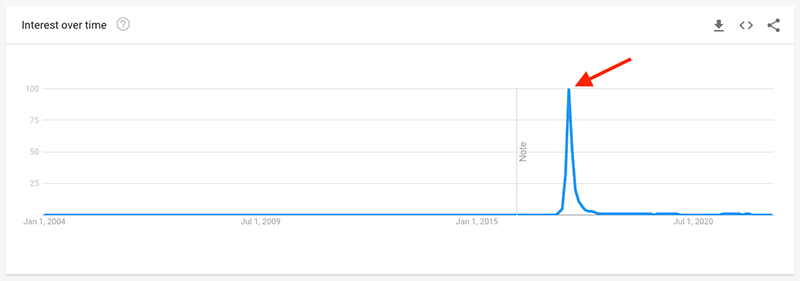
So, when using Google Trends data to identify your niche, always look at the past performance of a particular product search phrase (was there demand for the product before a craze started?) and ask yourself if the product is something that fulfils a genuine need, even when the craze is over.
Ultimately, the best business ideas tend to be those that solve a problem — for it to work well in practice, your dropshipping business concept should too!
Advertising data
Now, unless you are very lucky — and very good at SEO — it’s unlikely that a brand new dropshipping store is going to rank highly in search results particularly quickly. You’ll need to show adverts to potential customers that encourage them to buy your dropshipped products.
This is where the advertising data comes in — it tells you how big the audiences for particular products are likely to be, and how expensive it will be to display ads to these audiences.
When it comes to online ads, there are a lot of services out there that can be used to promote products. However, the two that most new dropshippers gravitate towards are Google Ads and Facebook Ads.
There are two main reasons for this.
First, they have a huge reach. They both let you put your products in front of huge audiences, and relatively easily too.
Second, they give you access to a vast amount of data that you can use to find niches and plan campaigns.
Google ads
With Google Ads, you get access to a keyword planner — this shows you how many people are searching for particular phrases, and how much it is likely to cost to bid on each one. It also shows you the search trends of the keywords you’re considering.
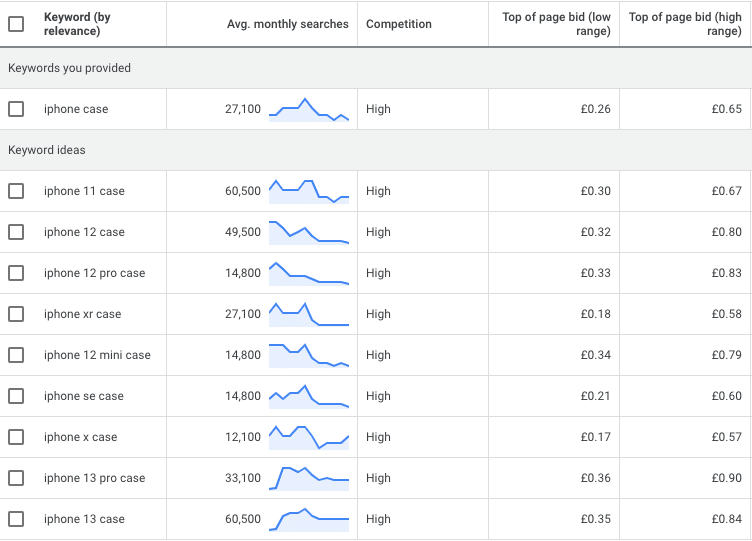
Significantly, it also gives you a list of really useful keyword ideas — and these can help you with niche selection.
Facebook ads
With Facebook Ads, you’re not dealing with particular search phrases but interests — you’ll be advertising your products to people who have indicated to Facebook in one way or another that they like particular items or brands.
Facebook gives you a tool, ‘Audience Insights,’ that lets you learn more about its userbase.
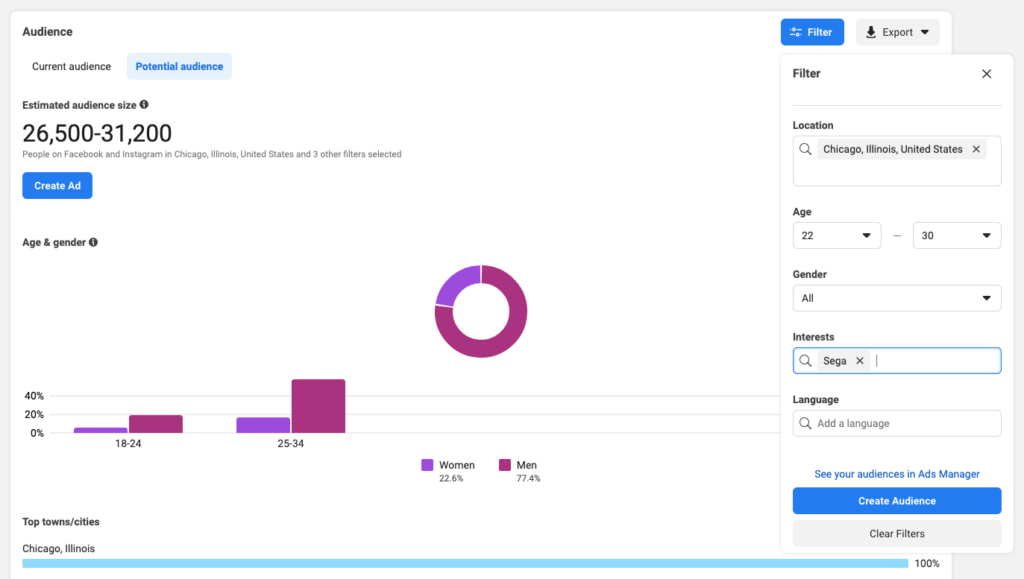
Using this tool, you can explore…
- demographics: age, gender, lifestyle, education, jobs, relationship status and so on
- page likes: categories and topics that Facebook users are interested in
- location: where people live and the language they speak.
…and more besides.
The Audience Insights tool won’t give you data on how much it will cost to advertize to particular groups on Facebook (to get this, you’ll have to run some test ads).
But it will definitely tell you if there’s likely to be demand for your products amongst a Facebook audience.
Once you’ve identified your niche, and decided what sort of products you’d like to sell online, it’s time to find a supplier. This involves installing a dropshipping app.
So, let’s go through doing that.
3. Add a dropshipping app to your Shopify store
As mentioned earlier, you can’t dropship ‘out of the box’ with Shopify — there’s no built-in dropshipping tool available from the platform that lets you source products or pass orders onto anybody for fulfilment.
Instead, you have to work with a dropshipping supplier.
Now, you could just find your own supplier, get some product photos and details from them, put these on your store and then email any orders onto them for fulfilment.
This approach is fine, but it involves a fair bit of admin work, which in turn makes it harder to scale up your dropshipping business.
Accordingly, most Shopify dropshippers turn to a dropshipping app to do the heavy lifting.
Dropshipping apps simplify the whole process by:
- letting you pick and choose the products you want to list on your site
- importing all the relevant product details onto your site automatically
- notifying your dropshipping suppliers every time an order is placed on your store.
There are loads of Shopify dropshipping apps available, and you can access all these in the Shopify app store.

Now, given the quantity of dropshipping apps available (around 640 at time of writing) it can be quite hard to choose which ones to use!
But a couple of particularly popular apps worth highlighting are DSers and Spocket — these two apps are commonly used in conjuction with a lot of ecommerce platforms in general, not just Shopify, and they let you dropship a vast range of products (including via the online retail giant Ali Express).
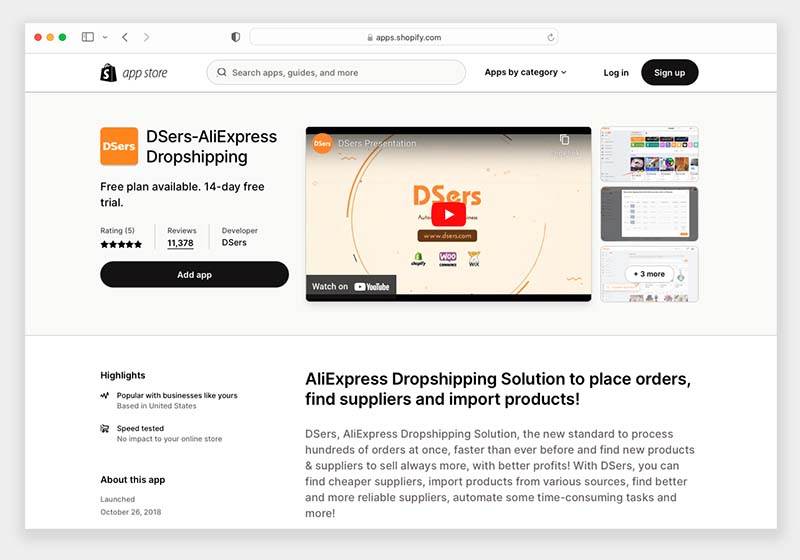
If you’re interested in print-on-demand dropshipping — which lets you add your own custom designs to products — Printful and Printify are popular, well-established solutions for this.
When choosing a dropshipping app there are some key things to watch out for, however.
You should try to ensure that…
- the dropshipping supplier you use is reliable
- the goods you’re dropshipping are ethically produced
- the shipping costs are not going to be excessive
- delivery times for your dropshipped products will be swift
- the cost for using the app is not excessive (most Shopify dropshipping apps involve a monthly fee).
Dropshipping apps on Shopify come with a ‘support’ section where you’ll find contact details and FAQ. You can use both to perform due diligence on app suppliers.

Once you’ve installed a dropshipping app, you can now select the products you’d like to sell on your ecommerce store; obviously, what you list on your store should reflect the niche you picked earlier.
The exact process for adding products and managing inventory will vary depending on the dropshipping app involved. However, using most dropshipping apps involves a process in which you:
- browse products
- select the ones you want to list on your store
- ‘push’ them to Shopify (with all their details — product images, descriptions and prices — being brought automatically across to your site).
When you’re finished adding products, it’s time to market your dropshipping store.
Let’s move onto that.
Don’t miss out — download our free Shopify Startup Kit
Our free Shopify Startup Kit is a must for anyone thinking of building an online store with Shopify. Containing a comprehensive e-book on starting a Shopify store, video tutorials, PDF cheatsheets and much more, it’s packed full of practical advice on how to get a Shopify business off the ground. It’s available for free to Style Factory readers — but for a limited time only.
4. Market your Shopify dropshipping store
At this point you’ve got your Shopify account, found your niche and have added all your products.
But unless you have a strong marketing plan in place, your lovely new ecommerce business isn’t going to make any sales.
(Not good!).
There are four things that you’ll typically need to focus on to make a success of a Shopify dropshipping store:
- Search engine optimization (SEO)
- Content marketing
- Online advertising
- Email marketing.
Let’s take a quick look at each.
Search engine optimization (SEO)
SEO may sound scary, but it’s actually easier than you might think, and there are lots of resources available online to help you with it.
For a basic understanding of Shopify SEO, I recommend that you watch the below video, and read our Shopify SEO guide — these two resources will give you a good understanding of the key SEO steps you’ll need to take to get a new Shopify store ranking in search results.
Content marketing
As its name suggests, content marketing is a way of using your content (typically blog posts) to attract visitors to your site. If your content is strong enough, it’s likely to rank highly in search results, and if it’s trustworthy and informative enough, it’s likely to encourage people to buy from you.
The sort of content that performs well here isn’t really sales pitches or product information, though — think instead of informative blog posts, how-to-guides, tips and advice, best-of roundups and so on.
Stuff that engages, basically.
Online advertising
While you can technically perform SEO and content marketing for free, online advertising always involves an investment.
However, the good news is that this investment can be small to begin with — the trick with online advertising is to spend small sums of money on test adverts, see which ads are delivering a return on investment (ROI) and then invest in these more heavily.
There are lots of platforms that let you run ads online, but Google Ads, Facebook, Instagram and TikTok end up being the starting point for many dropshippers. They are easy enough to use and command huge audiences (there are also lots of resources available online to help merchants make the most of them).
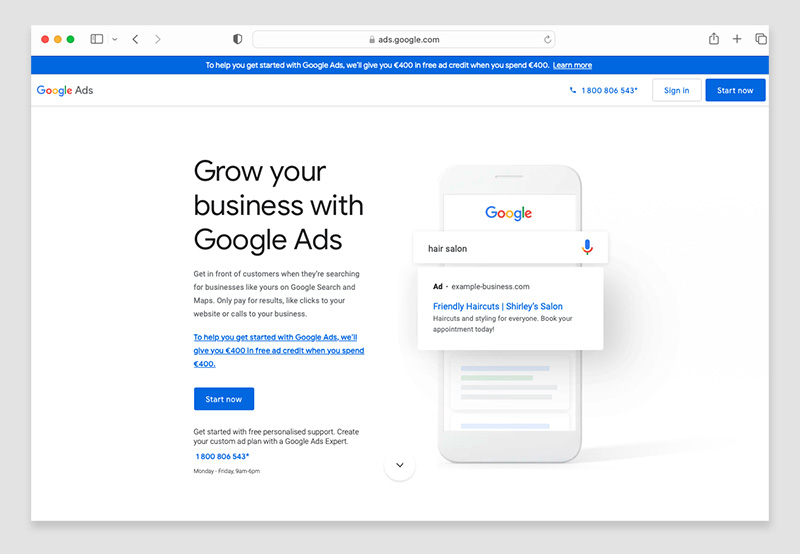
For help getting started with these platforms, check out the below resources:
Email marketing
Email marketing is a hugely effective way to generate sales (especially repeat sales). Newsletters let you place your latest products right in front of the people that are most likely to buy from you, and have a really great ROI.
Using email marketing to promote a new dropshipping store is tricky however — because you won’t have an existing mailing list to send any newsletters to!
But it’s still worth spending time on developing an email marketing strategy. There are two key ways to build an email marketing list:
- By running online ads that point people to a squeeze page (where you offer visitors an incentive for signing up to your mailing list)
- By capturing email addresses on your website (for example, by promising visitors a discount code when they sign up to your list).
If you can build a large, high-quality email list, you’ll find that promoting new product ranges and making sales becomes considerably easier over time.
You can also use this mailing list to promote any new videos or posts that you produce as part of your content marketing strategy.
💡 Tip: Shopify provides an app — Shopify Email — that lets you send up to 10,000 messages to your subscribers for free. You’ll find it in the Shopify app store.
For more information on creating a successful email marketing strategy, check out our guide to e-newsletters and email marketing.
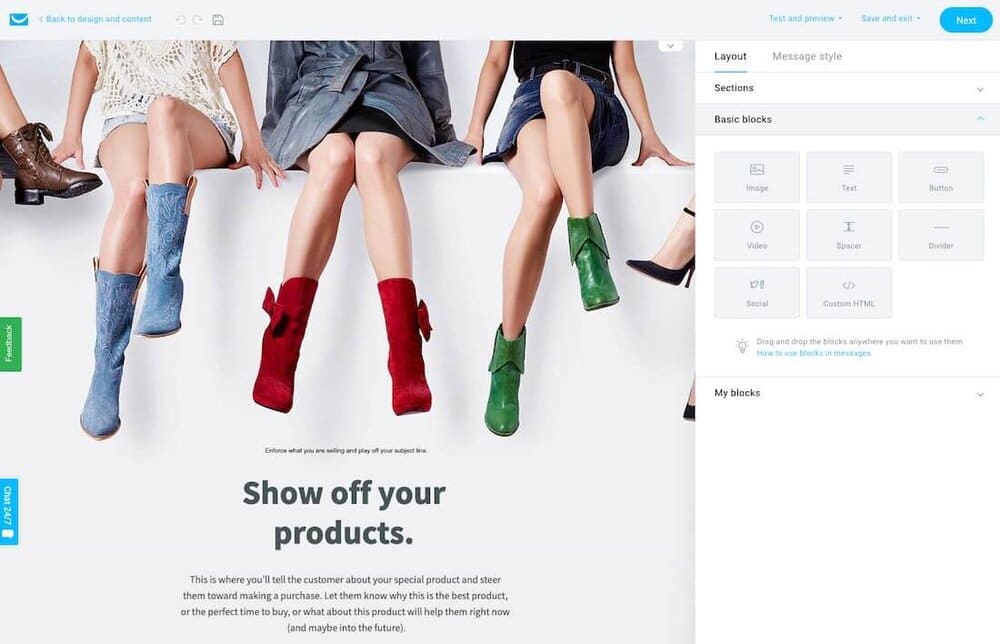
To learn more about advanced applications of email marketing, our guide to email automation is worth investigating.
Shopify dropshipping — further reading and resources
I hope you’ve found our guide to Shopify dropshipping helpful!
If you’d like to start dropshipping with the platform, a reminder that you can access a special extended version of its trial here.
For more information about dropshipping in general, check out our ‘What is Dropshipping?‘ and our ‘Dropshipping pros and cons‘ guides.
If you’re interested in setting up a print-on-demand business, make sure you check out our ‘What is Printful?’ article, our post on how to connect Printful to Shopify and our Shopify print on demand guide.
You may also find our post containing 25 ideas for a Shopify side hustle useful.
And finally, if you have any queries about setting up a Shopify dropshipping business, please let us know in the comments section below! We read them all and will do our best to help.
Good luck building your dropshipping business 🙂
📚 Related resource: How to sell on Shopify without inventory
Shopify dropshipping FAQ
Can I dropship for free on Shopify?
Although a free trial is available for Shopify, you can’t use the platform to dropship for free. To dropship, you’ll need to purchase a Shopify subscription and a dropshipping app, both of which involve monthly fees. (Some print on demand apps can be used for free, however).
What are the risks of dropshipping?
The main risks of dropshipping are ending up with suppliers that don’t deliver high quality products to your customers (or deliver goods late) and — due to the popularity of dropshipping as a business model — low profit margins.
Is dropshipping on Shopify easy?
Dropshipping on Shopify is relatively easy — it’s fairly straightforward to set up a Shopify store, install a dropshipping app and start selling online. However, it can be hard to learn how to promote your store effectively — you’ll need to master basic SEO and online advertising techniques to make your dropshipping store a success.
How do I start dropshipping with the Shopify platform?
The best way to start dropshipping with Shopify is to sign up for the free dropshipping starter kit, start building your store and then add a dropshipping app to it (many are available from the Shopify app store). Your dropshipping app will let you choose what products you want to sell and send order notifications to their suppliers automatically.
Is Shopify dropshipping difficult?
The process of setting up a Shopify dropshipping store and connecting an dropshipping app to it isn’t terribly hard (although, depending on the number of products you want to sell, it may be time consuming). The challenges you’ll face are more to do with the promotion of your dropshipping store — you’ll need to develop good marketing skills to make it a success.
Do alternative ecommerce platforms let me dropship?
Shopify isn’t the only leading ecommerce platform that lets you dropship — key competing platforms like Wix, Squarespace and BigCommerce all provide dropshipping features too. You can learn more about how these tools stack up against Shopify in our Wix vs Shopify, Squarespace vs Shopify and BigCommerce v Shopify comparisons.


Comments (2)
Thanks for the video. How do you set up the shipping within your Shopify store? Can you go into more depth about the actual settings of shipping?
Hey Kasey, the way that products are shipped will depend on the supplier you use – the apps all work in slightly different ways but essentially with dropshipping, it’s not really your job to worry about the shipping settings too much, that’s your supplier’s area. That said some apps will let you offer different shipping options to your customers — to see what these are it’s best to consult the relevant support documentation for your app. I hope this helps a bit?